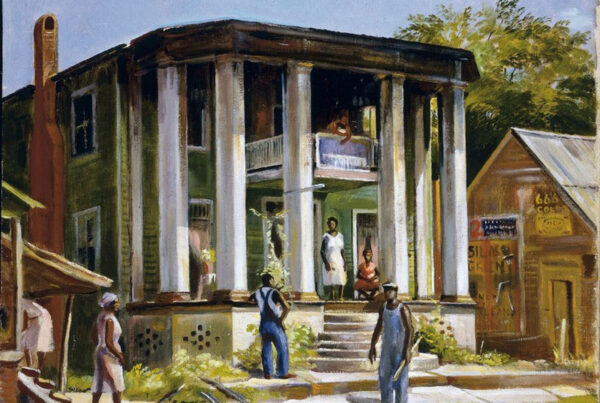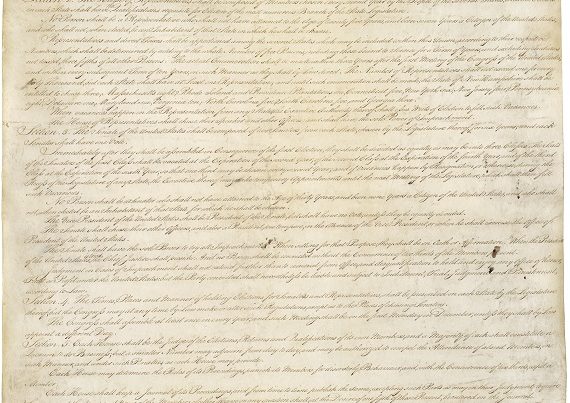
The American story is a story of secession, or better still secessions. The first permanent settlements of Europeans in North America were the result of a series of secessions from primarily the British Isles. Religious motive, political persecution, economic distress all play their part in impelling movement from the homeland into a new world, and it does so with a mix and jumble of motives. Assorted adventurers from a variety of classes will make up the first exploratory wave of settlement to North America, the losers follow. Puritans and Catholics on the losing end of Great Britain’s religious conflicts, distressed Cavaliers who find the religious and political tables turned upon them during the Puritan ascendancy, Quakers who seemed puzzled that their penchant for flaunting social and political norms is not well received by the rest of British society, Africans of various classes who had the triple misfortune of being on the losing side of West African wars of expansion, enslaved, and then sold to European slave traders, and the Scots-Irish who have had enough of Anglican political and religious repression. Subsequent waves of migration are made up of similar groups of people who find themselves on the losing end of things and leave for America.
The two great central events of American history were secession movements. The American War of Independence was in its totality both a conservative and radical event. Conservative in that the patriots were protesting British political innovations that undercut decades of American local governance, radical in that once the revolution genie escapes the bottle, he is loath to go back. The American War for Independence is thus transformed by modern ideologues into a revolution, in the radical sense of the word, meaning an attempt to effect regime change. As a result of these differing perspectives, we continue to fight over the meaning of the American War for Independence to this day. As for the late unpleasantness, there can be no doubt that the war was about secession. As to what sparked secession is a tougher nut to crack. In our day, the consensus has settled upon slavery. At the risk of engaging in what the social critic James Kunstler calls historical obfuscation, it is not so cut and dried to assume that the war, or merely secession, was only and abstractly about slavery. To be sure, there was a white-hot argument about slavery in the territories and slavery in general between Northerners and Southerners and among Northerners and Southerners at the time. In the debates over slavery various positions and stances on the subject emerged, it was not merely a case of a solid block of proslavery partisans versus antislavery partisans each with their own monolithic and static positions on the subject. And there are those pesky questions. If having slavery in the territories was so crucial to Southern slaveholders, why were so few moving into Kansas or Nebraska? If the maintenance of slavery was such a defining issue for Southerners, why did Southern politicians reject the Corwin Amendment, which President Abraham Lincoln supported, that would guarantee the constitutionality of slave labor in those states where it existed? These are the sorts of troublesome questions that need careful research to answer; such questions as these (and there are more) also challenge the confirmation of current biases of many regarding the secession and the late unpleasantness.
What can be agreed upon is that South knew that demographic trends placed it on the losing side of politics and it was time to get out. Southerners were acting no differently than previous generations of “losers”, who voluntarily left their home countries, or the American colonists who separated from the British imperial regime. Like the British imperial regime eighty years previous, a Northern Republican Party dominated government was intent upon keeping the seceded states under the rule of their regime. This placed the unionist in the difficult situation of arguing for the rightness of the American secession in 1776, and for the evil of Southern secession in 1860-61.
The federal regime in Washington, DC had good reasons for not allowing Southern secession to succeed, none of which had anything to do with slavery. The South was an important source of tariff revenue, raw materials, and a rewarding area for investment. Like most things American, it wasn’t about the money, it was about the money. Also, if Southern secession were allowed to go forward unchallenged, other regions in the United States might follow suit at some point in the future. Some states might even join the Confederacy! What then becomes of such great enterprises as the transcontinental railroad? The vertical and horizontal integration of business and finance on a national scale? Nothing raises a transaction cost like a multiplicity of national borders and currencies. Abraham Lincoln knew all of this; he was a railroad attorney before he became a political messiah.
Which brings us to the present day in the Old Dominion. The governor of West Virginia has invited the disaffected counties of Virginia to leave the Old Dominion and become a part of the mountain state. This makes some good sense, at least for the counties west of the Blue Ridge who share a common dominant culture with many of the citizens of West Virginia. No doubt, there are rural counties in the Piedmont, Southside, and Tidewater who will be tempted to bid farewell to Ol’ Virginia and seek sanctuary with West Virginia; they know the court party in Richmond despises them and wishes them no good. Virginia, which is now a microcosm of the country’s culture wars, could lead a new secession movement that could go a long way to relieving the considerable pressures along the fault lines of conflict in America. Perhaps cities such as Charlotte and Atlanta might become independent city states. Perhaps Fairfax County might unite with the District of Columbia and form the state of Progressiva. Aside from challenging the normalcy bias of politicians and public commentators, such moves will be resisted for the same reasons the American secession from Great Britain was resisted and the Southern secession from the infant federal leviathan was resisted, power and money.
West Virginia may not be acting from pure motives in encouraging the secession of Virginia counties from the Richmond Junta and into a union with West Virginia. Tax revenue, economic development, and congressional representation are at stake here. But so too are the important cultural issues. Governor Northam and the leadership of the misnamed Democratic Party believed they were in a position to issue diktats expanding abortion, curtailing the second amendment, and punishing those who dare to criticize them. Their inability to underestimate the seriousness of the reaction they provoked does not speak well for their political acumen. If they were unwilling to compromise on issues that deeply divide Virginians, it is doubtful that they will negotiate the loss of Virginia’s rural counties to West Virginia, no matter how contemptuous they are of the people who live there. The loss of these counties and their “deplorables” would mark an end to what little is left of the Old Dominion’s influence in the counsels of the nation. And significant revenue loss would impede the state, as well as significant chagrin for the governor and his minions once they are known as the people who destroyed Virginia. No, Governor Northam will be most discontented with secession, as was George III and Mr. Lincoln. It remains to be seen as to how this most ancient of American conflicts, court versus country, will play out here in Virginia and in the union.






